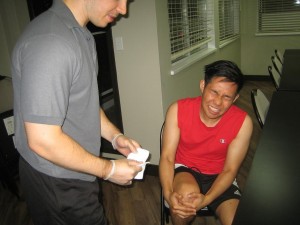Overview Of Bruises
- A bruise or “contusion” forms on the skin when it has suffered an ordeal such as a scratch or a knock to the affected area.
- The injury results in small blood vessels known as capillaries which burst, and the blood gets confined beneath the skin’s surface.
- Bruises can take place on the body at any age. Some contusions appear with very little discomfort to the area, so they can go unobserved.
- As you get older, your skin becomes thinner, and the capillaries beneath your skin break quickly. This means older individuals bruise more quickly than younger people.
Symptoms Of Bruises

Symptoms of a bruise fluctuate depending on the source of the bruise. Some symptoms consist of:
- Bruising of the skin in the affected area. The discoloration might be purple, red, or blue.
- Sensitivity in the affected area. The inflammation will get better as the bruise starts to heal.
Severe Symptoms
Seek medical assistance if you have:
- Inflammation and discomfort in the area of bruising.
- Bruising that takes place after a direct blow or fall.
- Bruising that takes place along with a sprained or broken bone.
- Bruising for no apparent cause.
- Bruising that doesn’t heal within four weeks.
- Bruising that occurs beneath the nails which is painful.
Causes Of Bruises
Unexpected bruises that form on the shin or knee might come from knocking the area on a bed frame, door frame, or chair.
Other common reasons for bruises consist of:
- Injuries from contact sports.
- Motor vehicle accidents.
- Direct blows (such as somebody beating you or being knocked by a ball).
Treatment Of Bruises
Bruises can be treated at home by applying the following methods:
- Use an ice pack to decrease any inflammation.
- Relax and rest the affected area.
